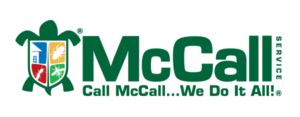Termites are pests that have earned a reputation for destroying man-made structures made of wood. All termites are not created equal, though, and all termites do not cause the same kind of damage when they attack a home. The two main types of termites in the United States are drywood termites and subterranean termites. How do they compare to each other?
Annual Damage in the U.S.
Subterranean termites are the most destructive termites in the United States. The damage caused by these ground termites dwarfs the damage caused by drywood termites. While the exact figure that these termites are responsible for is debated, their combined destruction is in the billions of dollars every year.
Colony Size
The reason subterranean termites do more damage than drywood termites is partly due to the size of their colonies. A typical subterranean termite colony is much larger than a drywood termite colony; subterranean termites usually number in the hundreds of thousands, while drywood termites number in the hundreds or thousands. In the species known as the Formosan subterranean termite, colonies can have as many as 2 million individual insects.
Speed of Damage
Since subterranean termites have larger colonies, they damage homes and businesses faster than drywood termites, even though drywood termite colonies are established inside the wood of a structure rather than in the ground outside. Formosan subterranean termites, which can create nests that are moist enough to be established inside structures, have even more destructive capability.
Amount of Damage
Drywood termites attack summer wood and can thrive in hard, dry wood. For this reason, they can consume furniture, picture frames, banisters, bed frames, and other wooden objects. Subterranean termites rarely attack belongings but are still problematic to a home’s structure.
Treatment Options
Since drywood termites can infest belongings, small-scale fumigation is often used as a treatment option. This treatment can be done by bringing a piece of furniture into a pest control facility to have it treated in a special chamber or by bringing a containment unit to the location of the furniture being treated.
Treating drywood termites inside the walls of a home requires a direct treatment option that works to destroy the termites on contact. Some products also work their way through an entire colony through the process of trophallaxis or by direct contact from termite to termite.
Treating for subterranean termites is best accomplished with the Sentricon system. This is an award-winning, eco-friendly termite bait system that directly targets invading termites and uses worker termites to poison the colony that sent them. Since Sentricon uses a poisoned bait that is slow-acting, it is able to get past the natural defenses of the colony and poison the queen. When the queen dies, the colony dies.
Evidence
When drywood termites infest structures, they leave tiny holes in wood and push their droppings out of these holes. These droppings are hard and have a look that is somewhere between pepper and coffee grounds.
When subterranean termites infest structures, they typically create mud tubes on foundation walls to get from the ground to the wood of a structure. These tubes are created to protect worker termites from the drying effects of the sun and air. Formosan subterranean termites establish mud tubes at first but do not need them once a nest has formed inside the structure.
Visual Damage
Drywood termites are more likely to create damage that will be seen, but it is not uncommon to find damage done by subterranean termites. If there is an area where the wood of a structure touches the ground, damage may be seen. These termites require shade and moisture to expose themselves outside of the wood. This damage will usually be found in a hidden place that has water damage.
For Termite Protection, Call McCall
If you need assistance protecting your property from all types of termites, call McCall. We use the most advanced products and protocols for proactive termite protection and fast termite control. Whether you’re plagued by subterranean or drywood termites, we’ve got you covered.



